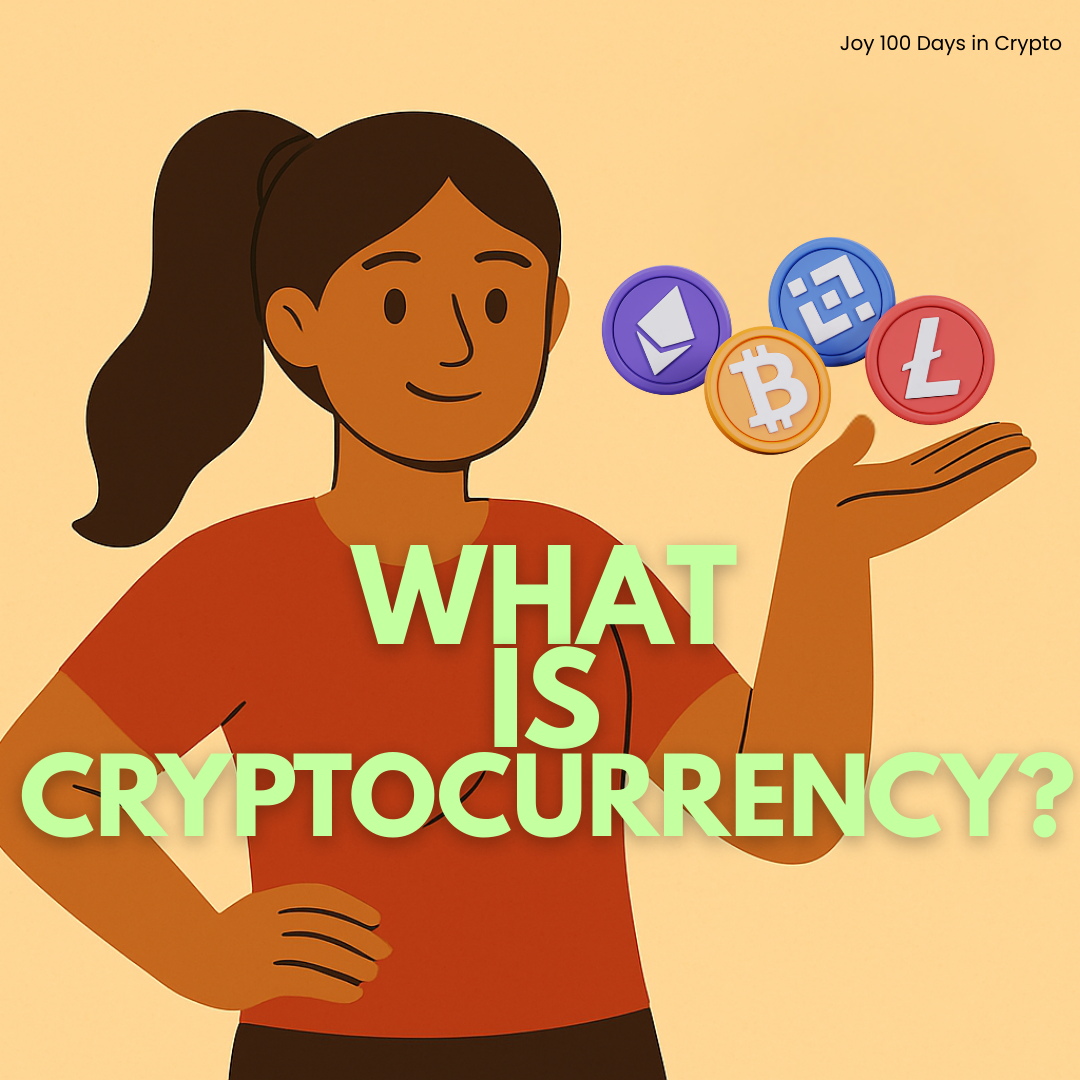When you hear crypto, what’s the first thing that pops in your head? I asked a few mom friends and their answers cracked me up—pyramiding, get-rich-quick scheme, nonsense. And honestly, that’s why I started learning about it myself.
Here’s what I’ve found: crypto is simply the future of money. It’s big, it’s new, and yes—it can feel overwhelming. But deep down, I know I’m still early. Someday I’ll look back and say, I didn’t shy away from the tech, the jargon, or the opportunity.
That’s why I want to share what I learn in a way that actually makes sense.
At its core, cryptocurrency (or “crypto”) is digital money. Unlike pesos, dollars, or euros, it doesn’t exist as physical coins or bills. Instead, it lives entirely online and is powered by a special technology called blockchain (we talked about this in the last post!).

So, what makes cryptocurrency different from the money in your wallet?
- It’s decentralized.
Traditional money is controlled by banks or governments. With crypto, no single authority is in charge. The blockchain keeps track of everything, and thousands of computers around the world work together to verify transactions. - It’s secured by cryptography.
That’s a fancy way of saying it uses complex math to keep your money and transactions safe. Think of it like a super-strong digital lock that’s nearly impossible to break. - It’s borderless.
You can send any cryptocurrency to someone in another country in minutes, without going through banks, exchange rates, or waiting days for transfers.
Popular examples of cryptocurrency
- Bitcoin (BTC): The very first cryptocurrency, launched in 2009. It’s often called “digital gold” because people see it as a store of value.
- Ethereum (ETH): More than just money—it powers “smart contracts” and decentralised apps.
- Stablecoins (like USDT or USDC): These are tied to real-world currencies like the US dollar, so their value stays stable.
There are thousands of cryptocurrencies, but not all are equal. Some have strong communities and real use cases, while others are short-lived trends.
How do people use cryptocurrency?
Payments – You can use crypto to buy goods and services online. Though in movies it’s often linked to shady stuff like drugs or money laundering, in reality, legit businesses are starting to accept it too.
Investments – A lot of people (myself included) buy crypto hoping its value will grow over time. It’s like digital gold—but with more ups and downs.
Remittances – Sending money abroad is faster and cheaper with crypto. If you have OFW family, ask them if they’ve tried it. (Tip: stablecoins are perfect for this—check out my post about them!)
New tech opportunities – From NFTs and decentralised finance (DeFi) to Web3 apps, crypto is opening doors to things that weren’t possible before.
Why do people believe in crypto?
Crypto appeals to people who want:
- More control over their money.
- Freedom from traditional banks.
- Faster, cheaper, and borderless transactions.
- A chance to be part of the next evolution of the internet and finance (this is me!).
Of course, it’s not all sunshine and rainbows. Prices can swing wildly, scams exist, and regulations are still catching up. But for many, the potential of crypto outweighs the risks.
Final Thoughts
Cryptocurrency is more than just internet money—it’s a new way of thinking about value, trust, and the future of finance. Whether you’re curious about investing, sending money, or simply staying informed, understanding crypto is the first step.
Stay tuned, because in my next post we’ll dive deeper into how crypto transactions actually work.

Leave a Reply